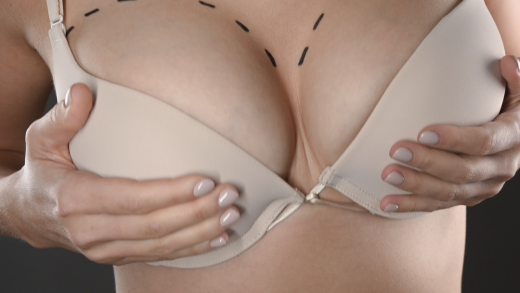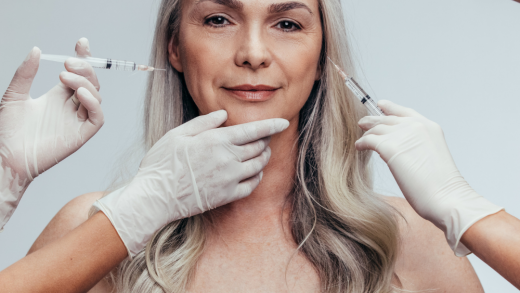Breast augmentation surgery is a significant step in enhancing one’s appearance and self-esteem. Recovery is just as important as the surgery itself, and following the right tips can lead to a smoother healing process. Individuals should be aware of how to care for their bodies during recovery to ensure the best results and minimise discomfort.
Adhering to post-operative guidelines is crucial. Patients are often advised to take prescribed medications as directed, maintain a healthy diet, and stay hydrated. Gentle movement and avoiding strenuous activities can help in promoting circulation without straining the body.
The emotional aspect of recovery should not be overlooked either. Individuals may experience a range of feelings, from excitement to anxiety about their new appearance. Engaging in relaxation techniques and seeking support from loved ones can play a vital role in enhancing the recovery experience.
Understanding the Recovery Process After Breast Augmentation Surgery
Recovery following breast augmentation surgery involves essential stages that patients must navigate for optimal healing. Factors such as the type of implants and individual pain thresholds influence the recovery experience.
Typical Recovery Timeline
Most patients can expect a recovery timeline spanning several weeks. Initially, a woman may experience swelling and discomfort for the first few days. Most return to light activities within one to two weeks, but strenuous exercise and heavy lifting should be avoided for at least four to six weeks. Regular follow-up appointments with a plastic surgeon will help monitor the healing progress.
Recovery Timeline Overview:
- Days 1-3: Swelling and soreness; rest is crucial.
- Week 1-2: Return to light daily activities; continue monitoring symptoms.
- Weeks 3-6: Gradual resumption of normal activities; avoid intense exercise.
Healing Stages and What to Expect
Breast augmentation patients typically experience several healing stages. The initial acute stage involves swelling, bruising, and discomfort. This is normal as the body adjusts to the silicone gel implants or fat transfer.
As healing progresses, patients will notice a reduction in swelling. By weeks three to four, sensations around the breast area may change as nerves regenerate. It is essential to follow post-operative care instructions, including wearing a supportive bra and avoiding specific movements to facilitate proper healing.
Key Healing Stages:
- Acute Stage (Days 1-3): Significant swelling and discomfort.
- Subacute Stage (Weeks 1-2): Decreasing symptoms; some sensations return.
- Late Healing Stage (Weeks 3-6): Stability and comfort improve; return to activity.
Common Discomforts and How to Manage Them
Discomfort after breast augmentation is common and can include soreness, tightness, and swelling. Various management strategies are effective. Over-the-counter pain relief, as prescribed by the surgeon, typically alleviates pain.
Cold compresses can also reduce swelling in the early days of recovery. Encouraging light movement and avoiding positions that strain the breasts can further enhance comfort. St. Louis patients should consult their plastic surgeon regarding any lingering discomfort or unusual symptoms to ensure a safe recovery process.
Discomfort Management Tips:
- Use ice packs for swelling.
- Follow prescribed pain medications.
- Limit strenuous activities and movements that strain the chest.
Essential Recovery Tips for Optimal Healing
Proper recovery following breast augmentation surgery is crucial for optimal healing. Attention to managing pain, swelling, and wearing appropriate garments can significantly impact the recovery experience.
Managing Swelling, Bruising, and Soreness
Swelling and bruising are common after breast augmentation. To minimise these effects, applying cold compresses to the chest area during the first 48 hours can be helpful. It is advisable to use a cloth to protect the skin and apply compresses for 15-20 minutes every hour.
Staying elevated with pillows during rest can also reduce swelling. He or she should aim to keep their upper body inclined to encourage proper blood flow and fluid drainage. Gentle movement can improve circulation, but strenuous activities should be avoided until cleared by a healthcare provider.
Importance of Rest and Support Garments
Rest is essential for recovery. It allows the body to heal and can help reduce the risk of complications. Patients are advised to take at least a week off work and engage in light activities. However, activities should be limited, especially those that involve lifting or strenuous physical exertion.
Wearing support garments, such as surgical bras or compression garments, is vital. These garments help minimise swelling and provide necessary support to the breasts during the early healing stages. They should be worn continuously as directed, usually for several weeks, to ensure that the implants settle correctly.
Medication and Pain Management Guidance
Pain management is an important aspect of recovery. Patients often receive prescription pain medication to manage post-operative discomfort. It is crucial to take these medications as instructed. Alternatively, over-the-counter medicines can also be used for pain relief once the initial recovery period has passed.
Staying hydrated and balanced diet can ease pain and enhance healing. Following specific instructions from the healthcare provider regarding medications can help avoid complications. If pain intensifies or is unmanageable, it is important to contact a doctor for further guidance.
Post-Operative Care and Monitoring
Post-operative care is crucial for a smooth recovery following breast augmentation surgery. Effective monitoring helps minimise the risk of complications and ensures optimal healing.
Reducing Infection and Complication Risks
To reduce infection risks after surgery, patients typically receive a course of antibiotics prescribed by their plastic surgeon. It is essential to take these medications as directed.
Keeping the surgical site clean and dry is vital. Patients should follow their surgeon’s instructions regarding showering and changing dressings.
Monitoring for signs of infection is critical. Symptoms such as increased redness, swelling, or discharge from the incision site require immediate attention. Lastly, drains may be placed to help remove excess fluid, and these should be cared for according to medical advice.
Scar Tissue Management
Scar tissue can form as part of the natural healing process. To manage this, patients might be advised to use silicone sheets or gel to promote healing and minimise the appearance of scars.
Gentle massage around the scarred area may also aid in preventing excessive scar formation, such as capsular contracture.
In some cases, patients may need to discuss additional procedures with their surgeon if scar tissue becomes problematic. This could involve further consultations to assess and address any issues related to scarring effectively.
The Role of Follow-Up Appointments
Follow-up appointments are essential for monitoring recovery. During these visits, the surgeon evaluates the healing process and checks for any signs of complications.
Patients should keep all scheduled appointments to ensure ongoing care and address concerns. In some instances, additional interventions may be required if complications develop.
These appointments also provide opportunities for patients to ask questions about their recovery and discuss any discomfort or changes they might experience. Regular communication with the healthcare provider is a key component of successful recovery.
Lifestyle and Long-Term Recovery Strategies
Following breast augmentation surgery, it is crucial for patients to implement lifestyle changes that support their recovery. This section focuses on important strategies for resuming normal activities, maintaining a healthy diet, recognising potential complications, and ensuring a smooth recovery process.
Resuming Exercise and Avoiding Strenuous Activity
Patients should generally avoid strenuous activity for at least four to six weeks post-surgery. Activities that elevate heart rate or involve heavy lifting can increase swelling and prolong recovery time. Light walking can help maintain circulation without straining the healing body.
Once cleared by a healthcare professional, patients may gradually reintroduce exercise. Low-impact activities such as walking, swimming, or gentle yoga can enhance mobility without excessive strain. It’s essential to listen to the body and adjust activity levels accordingly to avoid discomfort or injury.
Healthy Diet and Recovery Nutrition
Nutrition plays a significant role in recovery. A balanced diet rich in protein, vitamins, and minerals supports healing. Key foods to consider include:
- Lean Proteins: Chicken, fish, and legumes aid muscle and tissue repair.
- Fruits and Vegetables: These provide antioxidants that help combat inflammation.
- Whole Grains: Foods like brown rice and quinoa assist in maintaining energy levels.
Staying hydrated is equally important. Drinking ample water can help flush out toxins and maintain skin elasticity, which is beneficial for overall recovery.
Recognising Signs of Blood Clots and When to Seek Help
Blood clots can pose serious risks post-surgery. Patients should be aware of symptoms that may indicate a clot, including:
- Swelling: Particularly in the legs or arms.
- Pain or tenderness: In the calf, thigh, or any limb.
- Redness or warmth: In the affected areas.
If any of these symptoms occur, seeking medical help promptly is crucial. Early detection can prevent complications and ensure a safer recovery.
Ensuring a Successful Recovery Journey
Successful recovery involves a combination of patience, self-care, and regular communication with healthcare providers. Patients should attend all follow-up appointments to monitor healing and address any concerns.
In addition, employing relaxation techniques, such as deep breathing or meditation, can help manage stress during recovery. Maintaining a supportive environment with friends or family can also foster emotional well-being.
Ultimately, creating a structured recovery plan that prioritises these lifestyle strategies will contribute significantly to achieving optimal results after breast augmentation surgery.




